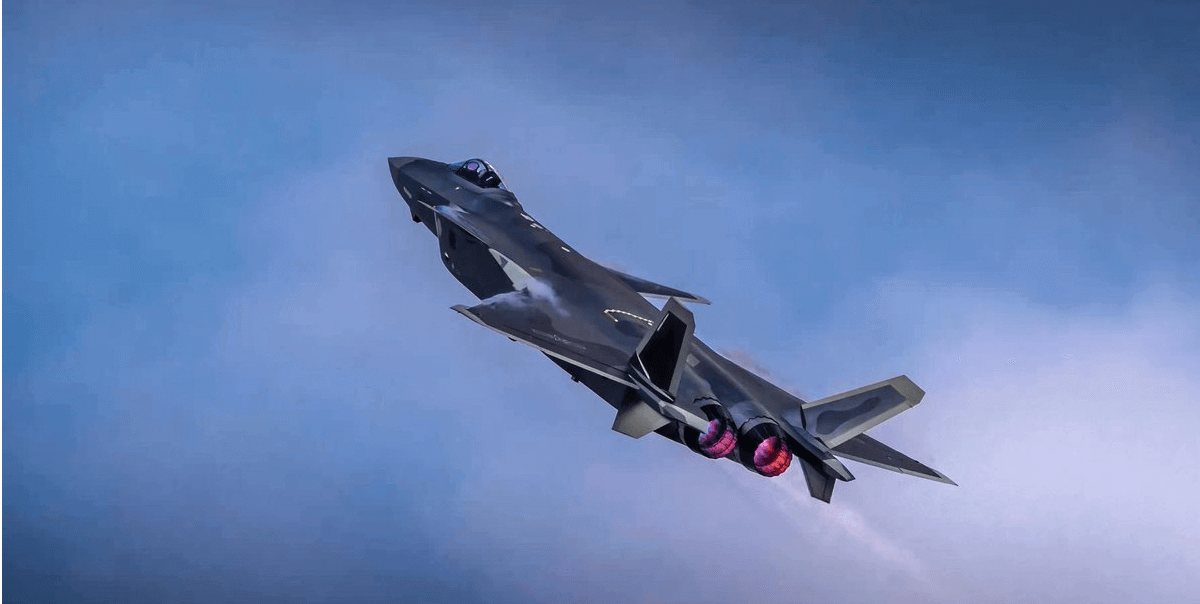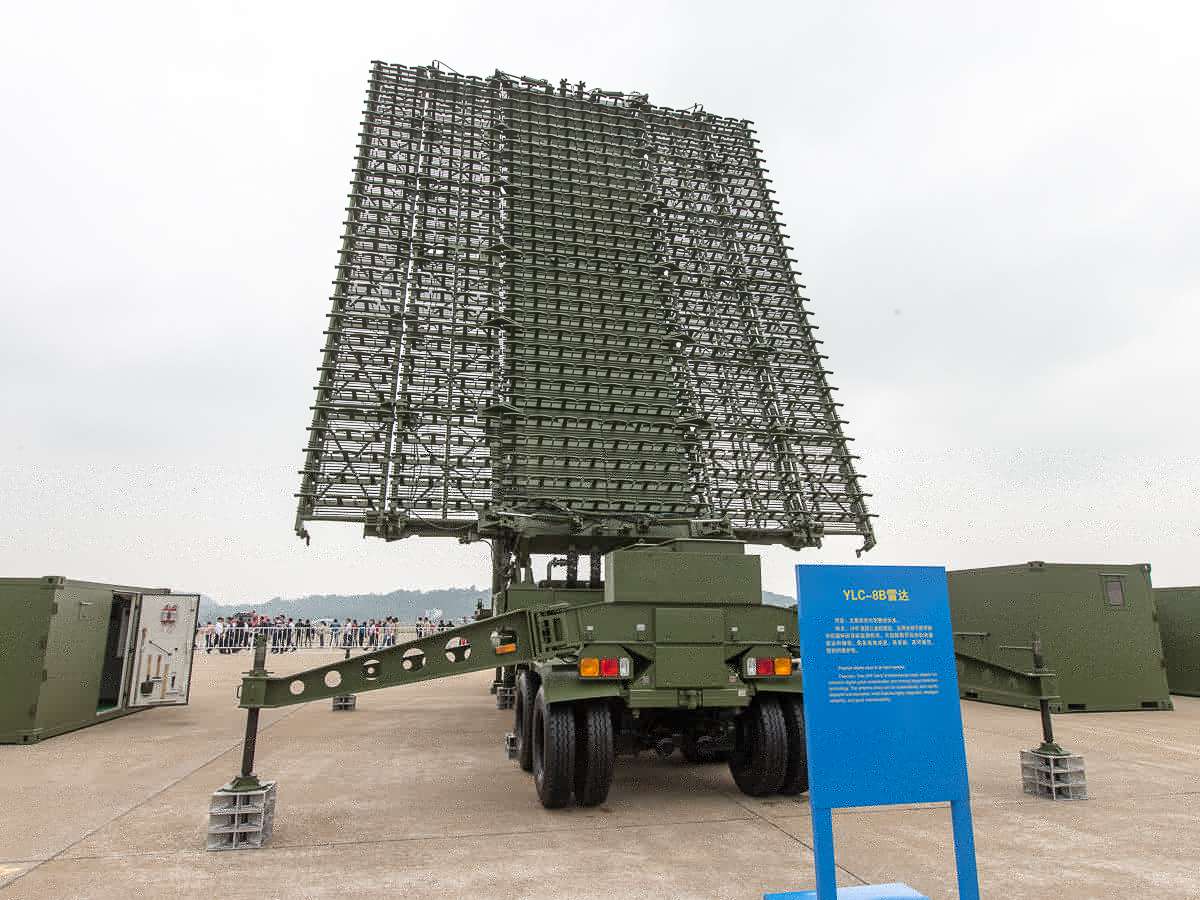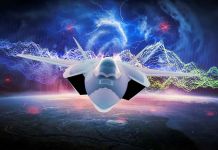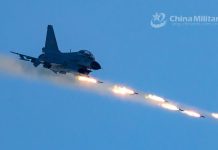At a time when Russia is facing isolation from the West, its Iron Brother’ China, has been cementing closer ties with Moscow. In the latest revelation, the Chinese PLA Air Force (PLAAF) has said that its J-20 and Russia’s Su-57, both stealth fighter jets, could participate in a joint combat patrol.
Helpless Against Hypersonic Missile! US To Boost Its Military Base That China Is ‘Practicing To Obliterate’ With Deadly Missiles
Last week, China’s Ministry of National Defense announced that the Air Forces of China and Russia conducted a joint strategic patrol above the Sea of Japan, the East China Sea, and the West Pacific Ocean as part of their annual military cooperation plan.
While the Chinese PLA Air Force sent its advanced H-6K strategic bombers, the Russian Aerospace Forces dispatched its Tu-95MS strategic missile carriers for the joint strategic patrol.
However, in a startling development, Chinese military experts have indicated that the stealth fighters of the two Air Forces, the J-20 and the Su-57, could soon be leading these joint patrols.
The development gains significance in the light of unhindered Chinese-Russian cooperation, which has been perceived as a security threat by the US.

Song Zhongping, a Chinese military expert and TV commentator, told the Global Times recently that to deal with the constantly changing battlefield environment and to improve combat capability, China needs enough fighter jets to ensure that strategic aerial patrols can be carried out reliably, effectively, and safely.
He indicated that more advanced equipment, such as China’s J-20 stealth fighter jet and Russia’s Su-57 stealth fighter jet, could participate in the next joint patrol. According to Song, this would result in a significant increase in the fleet’s overall combat capability.
Though heavy bombers are formidable assets, fighter jets are often required to escort these bombers as they are not designed for air to air combat. However, on the other hand, a stealth fighter jet could effectively engage in air combat with far great success due to its ability to evade radars.
VIDEO: Chinese H-6K bombers and Russian Tu-95MS bombers conducted regular joint strategic patrols above the Sea of Japan, E.China Sea and West Pacific on Tue. The aircraft abided by intl regulations and did not violate any other country's airspace: Russian Defense Ministry pic.twitter.com/771mVKjqW0
— Global Times (@globaltimesnews) May 24, 2022
The threat of J-20 patrolling with Su-57 becomes even more perilous as the PLAAF J-20 stealth fighter was already deployed for training patrols in the East China Sea and the South China Sea in April.
The move was aimed at countering the presence of American stealth fighters making an appearance in the contested region, as previously reported by the EurAsian Times.

The presence of stealth fighters in the same region where the Chinese and Russian bombers flew last week could lead to an escalation in tensions especially as both Beijing and Moscow remain locked in a tussle with Japan.
China’s consistent belligerence against Taiwan and a spate of military drills that took place in April also paint a rather dangerous picture.
President Joe Biden had recently stated that the US would intervene militarily in case China was to launch an invasion of Taiwan. The stealth fighters of the adversarial Air Force patrolling the region inhabited by staunch US allies could escalate tensions manifold at a time when the region has become a major flashpoint.
Additionally, the Global Times report also revealed that the Chinese bombers on their recent joint patrol were not alone in their voyage. The PLAAF J-16 fighter jet, which is the most frequent visitor to Taiwan’s ADIZ, escorted the H-6K bombers.

J-16 Cover For Bombers
China’s J-16 fighter jets were observed participating in a China-Russia joint patrol for the first time on Sunday, according to China Central Television (CCTV), which showed a photo of two J-16s flying alongside a Chinese H-6K bomber and a Russian Tu-95MS bomber.
According to Chinese military experts, Russia’s Defense Ministry said it dispatched Su-30SM fighter jets as an escort, implying that China’s J-16 deployment was deployed as a reciprocal arrangement.
NEW IMAGE: Two Chinese J-16 fighter jets escorted H-6K bomber and Russian Tu-95MS bomber during joint strategic air patrol on May 24.
Photo from Weibo/央视军事
CC @RALee85 @KomissarWhipla @MrFrantarelli @GrangerE04117 @RupprechtDeino @HenriKenhmann pic.twitter.com/bWb97ZMwIY
— Ryan Chan 陳家翹 (@ryankakiuchan) May 29, 2022
Since the strategic bombers are not designed to participate in air-to-air combat, observers stated that having fighter jets as escorts is also battle-oriented, noting that both China’s J-16 and Russia’s Su-30 are heavy fighter jets that may contribute to the joint patrol’s overall combat readiness.
As seen in the photo, each J-16 was equipped with two PL-10 close-range combat missiles; however, the J-16 can also carry long-range air-to-air missiles, as the unnamed expert pointed out.

The J-16’s high range, dual engines, twin seats, enormous fuel capacity, and in-flight refueling capability make it ideal for long-range escort operations, according to the expert.
The Japan Air Self-Defense Force had been monitoring the China-Russia joint patrol, according to the Ministry of Defense Joint Staff, although the presence of the J-16s and Su-30s was not mentioned in the press statement.
Analysts speculated that the Chinese and Russian fighter jets may have only partially escorted the bombers and did not reach close enough to Japan’s identification zone or that Japan simply missed them.
- Contact the author at sakshi.tiwari9555@gmail.com
- Follow EurAsian Times on Google News





